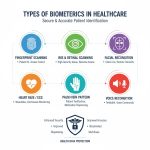Advanced Metering Infrastructure Market Gears Up for Robust Expansion: USD 24.1 Billion in 2023 to USD 65.7 Billion by 2032
The global Advanced Metering Infrastructure (AMI) Market is experiencing remarkable growth, driven by smart grid modernization, IoT integration, and rising energy management demands. As reported by Vantage Market Research, the market reached USD 24.1 billion in 2023, and is projected to increase to USD 65.7 billion by 2032, with a strong CAGR of 11.79% between 2024 and 2032. North America currently leads in market share, while Asia-Pacific shows the fastest anticipated growth.
Our comprehensive Advanced Metering Infrastructure (AMI) Market report is ready with the latest trends, growth opportunities, and strategic analysis. View Sample Report PDF.
Key Takeaways
- Market Scale & Growth: Valued at USD 24.1 billion in 2023, expected to reach USD 65.7 billion by 2032—CAGR of 11.79%.
- North America dominates with ~31.7% market share in 2023; Asia-Pacific is the fastest-growing region.
- Smart metering devices lead by product type; residential end-users account for the largest share.
- Increased IoT penetration, need for low-cost, efficient metering solutions, and smart grid upgrades propel demand.
- In May 2025, Ameresco completed a water-infrastructure modernization for Cleveland, Texas, deploying AMI systems projected to generate over USD 2.5 million in positive cash flow plus recover USD 6.8 million in revenue over 15 years.
Premium Insights
The AMI market is propelled by expanding smart grid deployments, rising energy efficiency mandates, and enhanced utility–consumer communication. Smart metering enables two-way communication platforms essential for demand response, real-time data, and integrated energy management. Governments and utilities globally are embracing AMI as a vital infrastructure upgrade.
Market Size & Forecast
- 2023: USD 24.1 billion
- 2032 Forecast: USD 65.7 billion
- CAGR (2024–2032): 11.79%
The AMI market includes a mix of established vendors (smart meter and solution providers) and service-based players. It exhibits moderate concentration, led by innovative smart metering devices and integrated services. Utilities’ increasing reliance on data-driven energy management boosts demand for system integration and customer analytics.
For Advanced Metering Infrastructure (AMI) Market Research Report and updates detailed: View Full Report Now!
Product Type Insights
The product type segment includes Smart Metering Devices, Solutions, and Services. Among these, smart metering devices hold the largest share, as they provide the backbone of AMI systems, enabling accurate, real-time monitoring and two-way communication between utilities and consumers. Solutions support integration, data management, and energy analytics, while services ensure ongoing operation, upgrades, and maintenance. Together, these offerings help utilities modernize infrastructure, optimize energy use, reduce losses, and improve billing transparency.
End-User Insights
The end-user segmentation covers Residential, Commercial, and Industrial sectors. The residential segment dominates due to large-scale adoption of smart electricity and water meters, growing smart home ecosystems, and government mandates for energy efficiency. The commercial segment follows, as businesses increasingly seek accurate billing and consumption tracking to cut costs. The industrial segment is steadily rising, driven by demand for operational efficiency, predictive maintenance, and real-time monitoring of energy-intensive facilities. This segmentation reflects AMI’s broad application base.
By Region
North America Market Trends
North America dominates the AMI market due to early adoption of smart grid technologies, strong regulatory support, and significant investment in energy infrastructure. The U.S. and Canada lead with large-scale deployment of smart meters to improve grid reliability, reduce energy losses, and enable demand-response programs. Rising focus on sustainability and renewable integration further accelerates adoption. Utilities in the region increasingly leverage AMI for real-time data, outage detection, and predictive maintenance, strengthening customer engagement and energy efficiency initiatives.
Europe Market Trends
Europe’s AMI market is driven by stringent EU mandates requiring smart meter rollouts and a strong push for energy efficiency. Countries such as the U.K., Germany, France, and Italy are leading adoption with nationwide deployment programs. The region prioritizes consumer empowerment through detailed consumption insights and flexible tariff structures. Integration of renewable energy sources and decarbonization targets also drive demand for advanced grid solutions. Enhanced focus on data privacy, compliance with GDPR, and secure communication protocols shape the European market.
Asia-Pacific Market Trends
Asia Pacific is the fastest-growing AMI market, fueled by rapid urbanization, increasing electricity demand, and large-scale government initiatives in China, India, and Japan. Massive investments in digital infrastructure and smart city projects drive smart meter rollouts across residential and industrial sectors. Utilities rely on AMI to address challenges such as power theft, grid stability, and peak load management. Rising adoption of renewable energy and supportive policy frameworks further contribute to market growth, making Asia Pacific a key AMI growth hub.
Latin America Market Trends
Latin America’s AMI market is steadily growing, with Brazil, Mexico, and Argentina at the forefront. Key drivers include the need to reduce transmission and distribution losses, improve billing accuracy, and support modern energy management. Governments and utilities are increasingly implementing pilot projects and phased rollouts of smart meters. Although economic challenges and infrastructure limitations slow large-scale adoption, the region benefits from international partnerships, investments in renewable energy, and rising awareness of energy conservation among consumers and businesses.
Middle East & Africa Market Trends
The Middle East & Africa AMI market is emerging, supported by government-led smart city initiatives, water conservation programs, and diversification of energy resources. Countries such as Saudi Arabia, UAE, and South Africa are investing in smart grids and smart water metering to enhance utility efficiency. Rising energy demand, coupled with the need to curb non-technical losses, is driving adoption. While limited infrastructure and funding remain challenges, growing interest in renewable integration and digitalization creates long-term opportunities for AMI deployment.
Top Key AMI Companies:
- Itron, Inc.
- IBM Corporation
- Siemens AG
- Schneider Electric SE
- General Electric
- Elster Group
- Sensus
- Landis+Gyr
- Aclara Technologies
- Cisco Systems Inc.
Recent Developments
May 2025: Ameresco completed an AMI-based water infrastructure upgrade in Cleveland, Texas, involving smart meter deployment, customer portals, and data integration. The project is expected to recapture USD 6.8 million in lost revenue and generate over USD 2.5 million in positive cash flow over 15 years.
AMI Market Future Scope
The Vantage Market Research report includes comprehensive market sizing (2023–2032), CAGR, segmentation by Product Type, End-User, and Region, plus analysis on market drivers and competitive landscape. It offers both quantitative metrics and qualitative insights for stakeholders.
Market Dynamics
Driver
The global AMI market is primarily driven by the rising demand for energy efficiency, grid modernization, and the integration of renewable energy sources. Governments and regulators are mandating smart meter rollouts to reduce losses, enhance billing accuracy, and improve power quality. AMI enables real-time monitoring, outage management, and demand-response programs, which help utilities optimize operations and reduce costs. Growing consumer awareness about energy consumption and sustainability further strengthens adoption across residential, commercial, and industrial sectors, boosting overall market growth.
Restraint
Despite strong growth potential, high initial deployment costs and complex installation processes remain major restraints for the AMI market. Smaller utilities and emerging economies often face budget constraints, slowing large-scale adoption. Concerns regarding cybersecurity and data privacy add further barriers, as consumers and regulators demand robust protection measures. Integration challenges with legacy grid infrastructure also limit adoption speed. Additionally, lack of consumer education about the benefits of smart meters may hinder acceptance, especially in regions with low digital awareness.
Opportunity
The rapid expansion of smart city initiatives and the digital transformation of utilities present significant opportunities for AMI adoption. Increasing penetration of renewable energy sources, such as solar and wind, drives demand for advanced grid management and storage integration, where AMI plays a crucial role. Emerging markets in Asia Pacific, Latin America, and Africa offer immense growth potential due to government-backed modernization programs. Furthermore, the rising use of data analytics, IoT, and AI in energy management creates new business models for utilities.
Challenges
The AMI market faces challenges related to interoperability, data management, and regulatory uncertainties. Different vendors often use proprietary technologies, creating compatibility issues across systems. Handling and analyzing massive volumes of meter data requires robust infrastructure and advanced analytics capabilities, which many utilities lack. Regulatory inconsistencies across regions slow uniform deployment. Consumer resistance due to misconceptions about radiation, billing transparency, and privacy also presents hurdles. Addressing these challenges requires standardized protocols, stronger cybersecurity measures, and consumer-focused awareness campaigns.
Global AMI Market Segmentation
- Product Type: Smart Metering Devices, Solutions, Services
- End-User/Application: Residential, Commercial, Industrial
- Region: North America; Europe; Asia-Pacific; Latin America; Middle East & Africa
Frequently Asked Questions
What was the AMI market size in 2023, and what’s the forecast?
-> USD 24.1 billion in 2023, with a forecast of USD 65.7 billion by 2032 at 11.79% CAGR
Which regions lead and are fastest growing?
-> North America leads; Asia-Pacific growing the fastest.
How is the market segmented?
-> By Product Type (Devices, Solutions, Services), End-Use, and Region.
Who are the major industry players?
-> Itron, IBM, Siemens, Schneider, GE, Elster, Sensus, Landis+Gyr, and others.
What recent development occurred in AMI?
-> Ameresco’s deployment in Cleveland, Texas led to expected revenue recovery and cost savings.
![[Market Research Reports] – Research Google News Blog | VMR.Biz](https://www.vmr.biz/wp-content/uploads/2022/12/logo-removebg-preview.png)











